Despite its initially promising duality concept, tactical shooter Spectre Divide is held back by a hesitance to take further creative risks. The results are underwhelming.
For a new game studio, there are few genres as difficult to break into as that of the tactical shooter. With the space dominated by behemoths Valorant and Counter-Strike, newcomers are up against established games with deep tactical gameplay, distinctive world designs, and dedicated communities. Newbies face a demanding set of player expectations, with a checklist that includes immaculate gunplay, perfect pacing and ultra-clear level design as the bare minimum. And only when you get beyond that do things get really interesting. What have you got that’s fresh, and can encourage new forms of tactical thinking? Can you provide enough of a hook that players will want to stick around to master the mechanics? Is your game simply different enough to stand out?
Given all this, you can’t help but respect anyone attempting to crack the market – particularly when said contender is an indie studio. And Spectre Divide is bringing an idea to the party that’s nothing if not unique. Underpinning the gameplay is the concept of duality: you control two separate bodies, and can switch between them during a match to blindside your enemies. This also means you get two lives per round, effectively giving you a second crack at the whip should you get headshot from out of nowhere. It’s an intriguing idea on paper, and immediately opens up a realm of new tactical possibilities. Yet in practice, the implementation of this two-body concept feels rather surface level. Rather than doubling down on its hook, Spectre Divide often plays it safe, and avoids taking the sort of additional creative risks that would separate it further from other tactical shooters. On its own, the duality gimmick just isn’t strong enough to keep you repeatedly coming back for more. It’s a game that feels almost fun, but not quite.
When it comes to first impressions, Spectre Divide doesn’t get off to the strongest of starts. On booting the game up for the first time, a short animation introduces you to its world: a cyberpunk future where, much like Apex Legends, the population is obsessed with an underground bloodsport. That’s about as deep as the lore gets, however, and I’d be hard-pressed to give you any further details about the backstory. This lack of exposition partly stems from the game’s decision to forgo a roster of in-universe characters in favour of custom player avatars. One of the first screens you’re presented with is the option to customise your main character and spectre – and boy do all of these options look bland. In the year 2100, it seems the Spring/Summer fashion season is all about dusty bulletproof vests and desaturated combat leggings. The future is truly looking bleak. If you want your character to look a degree more interesting than a generic cannon-fodder soldier, you’ll have to visit Spectre Divide’s store and spend £13.50 on a skin. Given that it’s a free-to-play game, it’s understandable that Spectre Divide has to make its money through microtransactions. But it still leaves a bit of a sour taste in the mouth when the basic character customisation options are so boring, and the only cosmetic items you can earn through gameplay are obvious filler like sprays and banners. Call me old-fashioned, but 43 quid for a gun skin pack just seems a bit much.
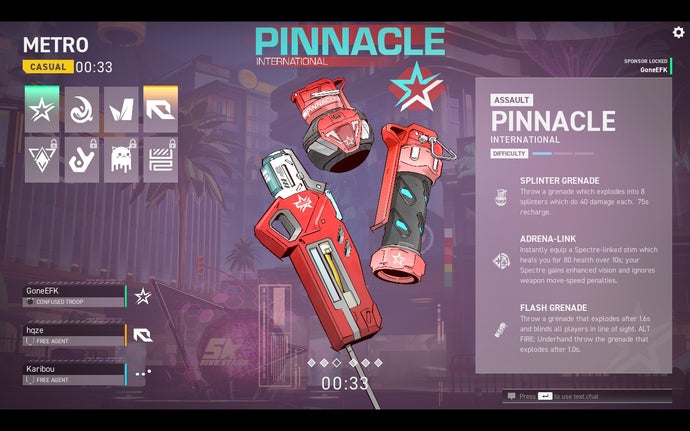
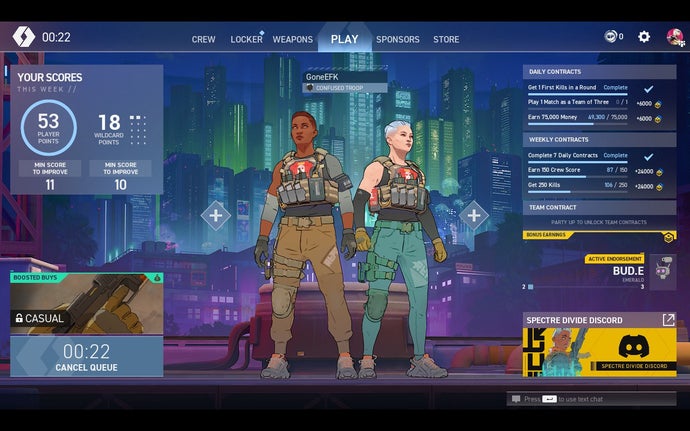
Diving into a match reveals that Spectre Divide looks pretty similar to other tactical shooters: it’s attack and defence, with one team aiming to plant a bomb and the other trying to defuse it. The main differences are the two-body mechanic, and that players must select a ‘sponsor’ at the start of each match. (Famously, players will quickly become attached to soulless corporate brands. I love Pinnacle International! Who needs characters or personalities?) Each sponsor gives you access to three different abilities: Bloom Technologies, for instance, gives you a barrier, healing ability and ‘swarm’ grenade that blocks vision and damages players. You initially pick between four different sponsors, and there are four other sponsors that can be unlocked through gameplay and winning matches. (Or spending money to unlock them instantly, of course.) It’s a system that encourages players to keep grinding through the ranks, although the amount of XP required to unlock a new sponsor is excessive; it takes days of completing challenges to unlock a single one. For a game that needs to quickly grab and maintain the interest of new players, it’s an odd decision to make progression feel so slow.
The first few matches of Spectre Divide are a steep learning curve, made more difficult by the game’s disorienting UI. Despite an attempt to provide a simplified ‘quick’ tab for newbies, the buy menu is still hugely overwhelming, presenting dozens of guns in a way that’s hard to understand when under time pressure. The visual effects for abilities are not particularly intuitive, and it takes time to understand the function of each one. The ‘swarm of bees’ is just a yellow ball, for instance, while smoke grenades resemble a solid blue-grey sphere… not exactly what you’d imagine a smoke cloud to look like. As the game doesn’t tie abilities to specific characters, it makes the combat less immediately readable – you have no idea what an enemy’s abilities are just from looking at them, and therefore cannot plan strategies to counter them. Somewhat incredibly, it’s also very hard to tell the difference between enemies and teammates. This leads to farcical situations where you and a teammate might panic-spray bullets at one another for no reason, alerting your actual enemies to your presence in the process. The solution to this, it turns out, is to change the ‘enemy outline colour’ in the game’s settings – but with many players unaware of this option, cases of mistaken identity occur pretty frequently during matches. I cannot tell you the number of snarky messages I read in the chat that were related to this problem.
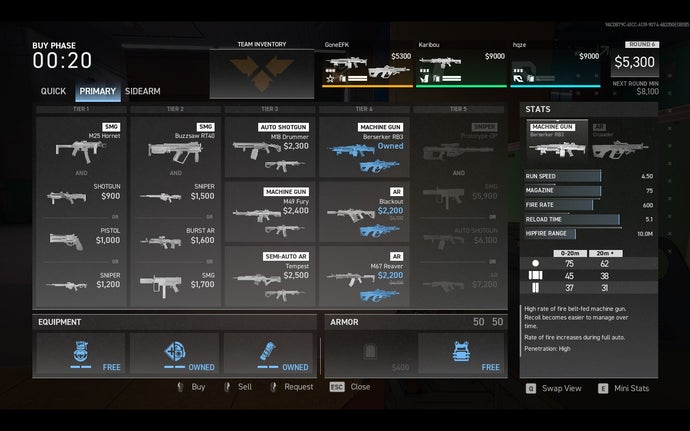
Once you become familiar with Spectre Divide’s oddities and eccentricities, however, you start to mess around with the two-body mechanic – and discover a whole bunch of tactical possibilities. You can park your bonus body next to a point, and use it as a proximity alarm to let you know when enemies are nearby. You can quickly switch sides of the map by hopping between bodies, allowing you to defend points without having to run through the entire level. You can also throw your spectre ‘puck’ onto a high ledge or into a vent, and teleport up there to gain a height advantage over your enemies. Because your spectre is vulnerable when you’re not controlling it, you also need to consider how to keep it safe. This often requires some truly high-stakes babysitting. Some teams will deliberately try to sneak behind your lines to eliminate spectres, so to counter this, you might need to keep your second body close by. If you mess up in a firefight and lose a body, well, having a spectre on-hand means you can quickly take revenge on your killers before they relocate.
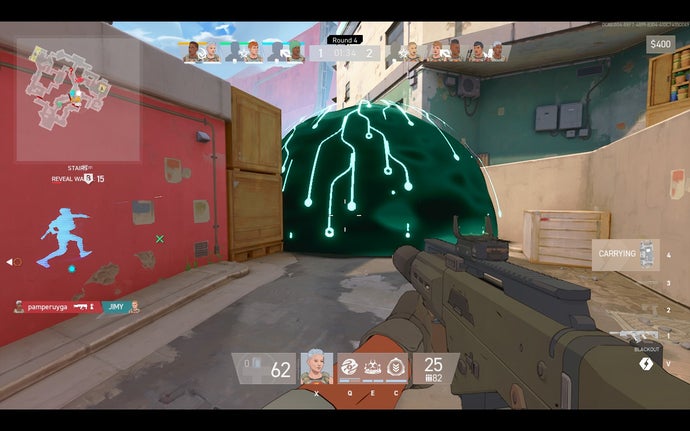
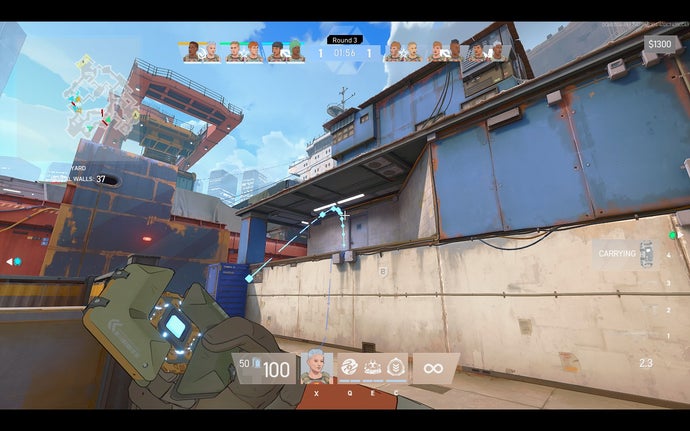
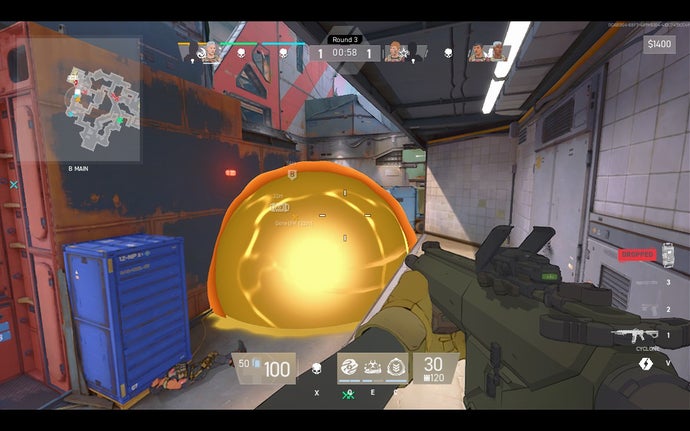
There are some fun plays to be had here, but once you lose one of your bodies, it becomes apparent that Spectre Divide just doesn’t have a whole lot else going on. The abilities may look cyberpunk in design, but in practice they’re largely what you’d expect to find in any shooter: a mixture of heals, grenades and barriers. They didn’t inspire me to change my tactics, nor did they feel like real game-changers within a round. The gunplay is mostly okay, and rewards those who aim down sights rather than those who carelessly run through corridors while spraying and praying. But I never got excited about any of my loadouts, and never ‘clicked’ with a specific gun in the same way I have with other shooters.
Yet Spectre Divide’s greatest problem is that it feels utterly juiceless – this is a game with absolutely no vibes. Walking through its maps is an empty and quiet experience, partly due to the game’s 3v3 format, which means there’s a limited number of players active at any one point. The maps are unremarkable and have all blended into one greyish blob in my memory, thanks to some seriously uninspired world design. Considering Spectre Divide’s futuristic cyberpunk setting, and an initially pretty form of character cell-shading, this is a huge missed opportunity. Where are all the neon signs and colourful characters? Come on now. The treacle-slow movement speed and limited cover makes you feel exposed while walking around, and I felt like my options to approach gunfights from different directions were rather limited. Encounters often boiled down to slow-peeking around corners to see who could land a headshot first, which is not my idea of a fun gunfight. Maybe a more accurate name for this game would have been Twin Peeks. Anyway, I digress: the point is that I’ll always take a map with clutter, cover and personality over one so sterile that it makes me feel like a hamster in a maze.
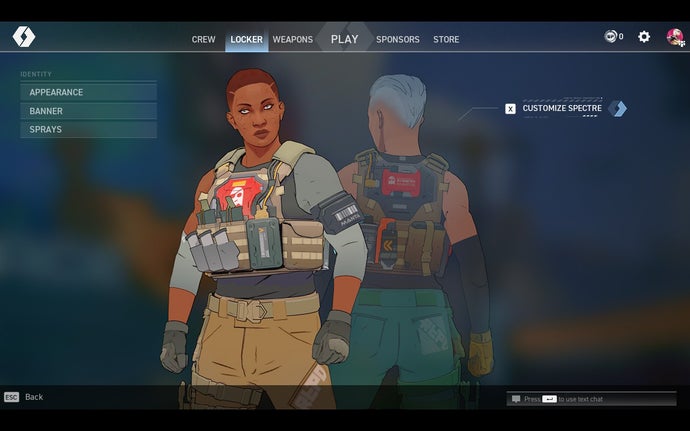
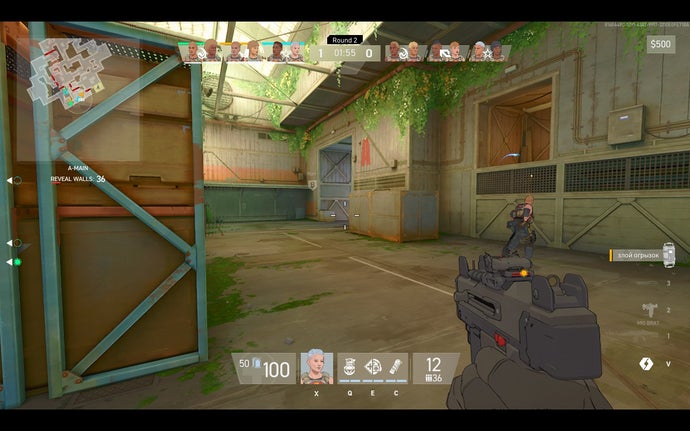
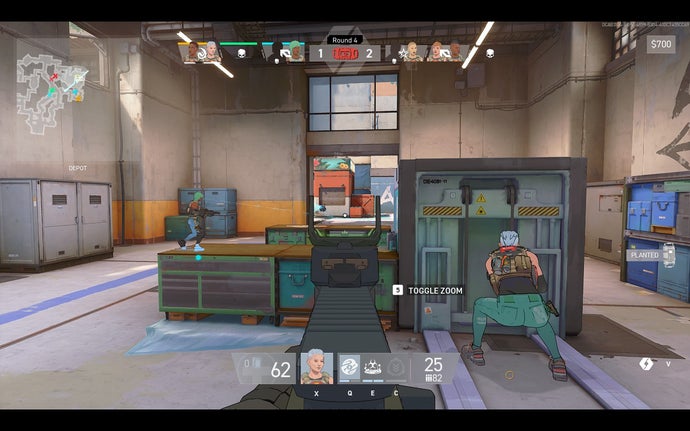
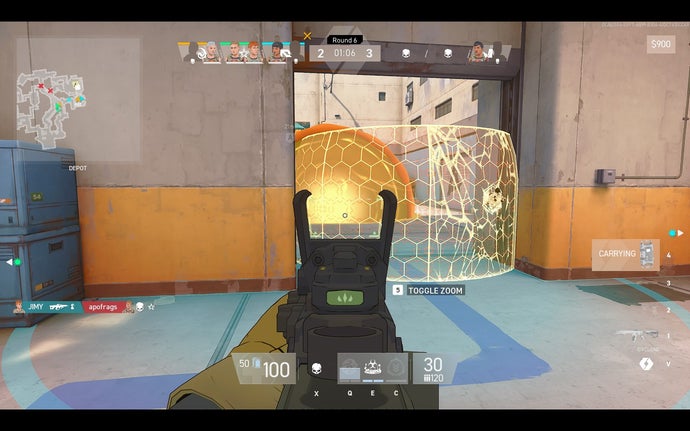
On paper, Spectre Divide’s duality idea is one with serious potential, but the way it’s been implemented here just doesn’t take off, with its capacity for mixing with other abilities and mechanics underexplored. In its present form, it feels like it’s just been tacked on to a standard tactical shooter. With some lacklustre art direction and minimal lore, Spectre Divide’s world design feels like an afterthought: a space you just don’t want to spend time in, while the various UI, combat readability and progression missteps are significant. In a genre dominated by two mammoth titles, it’s genuinely admirable of Mountaintop Studios to attempt to bring a new twist to the scene. I just wish the developer had been prepared to double down on its idea, and take the creative risks required to give Spectre Divide a truly distinctive identity.
A copy of Spectre Divide was independently sourced by Eurogamer.
